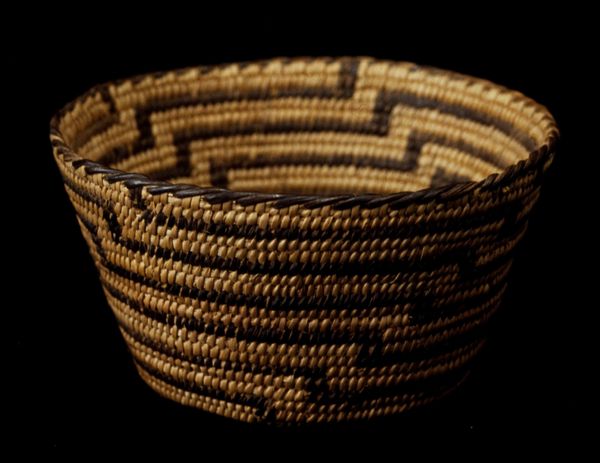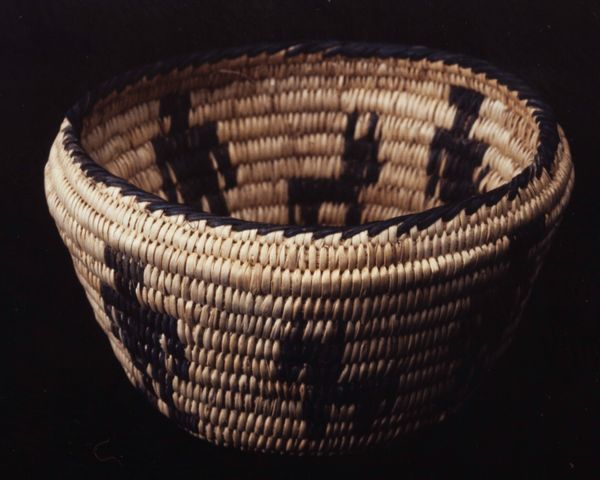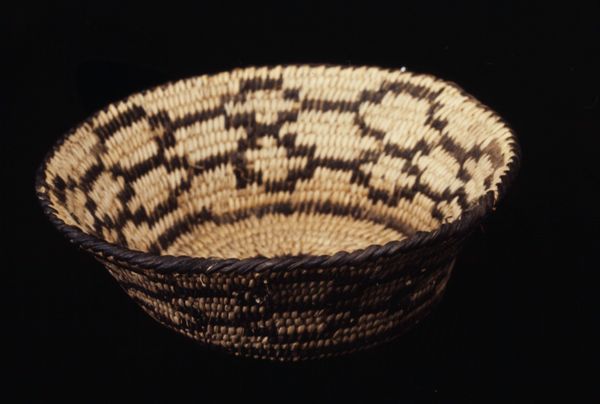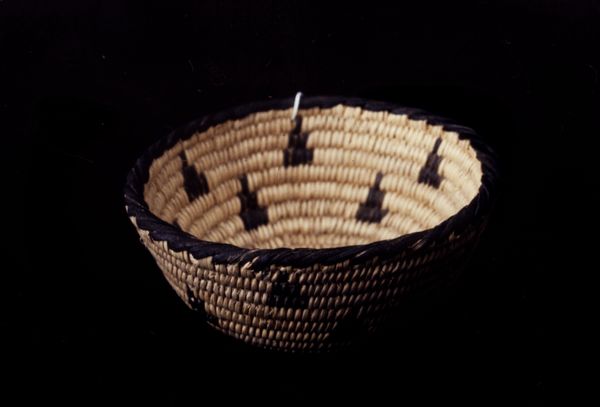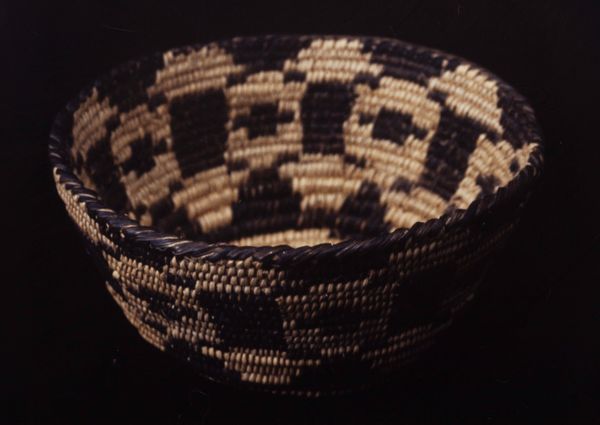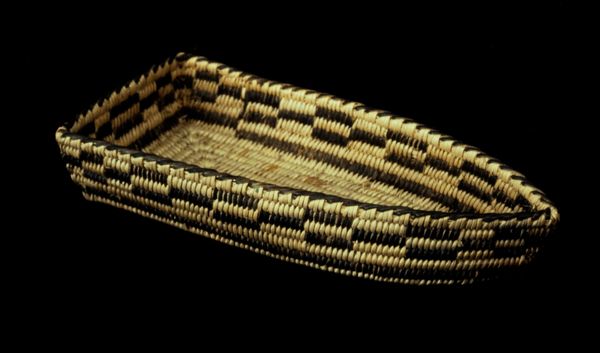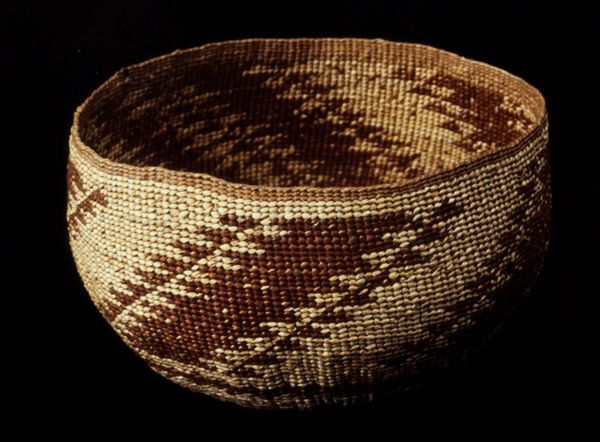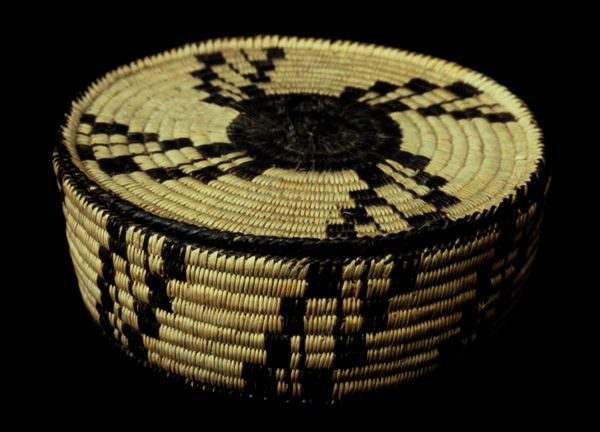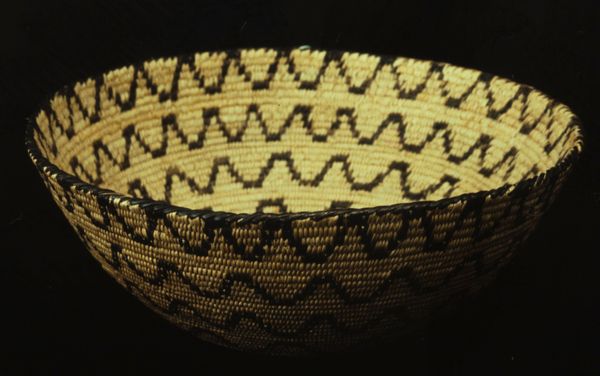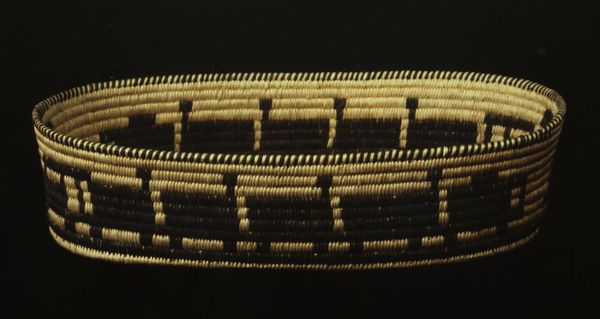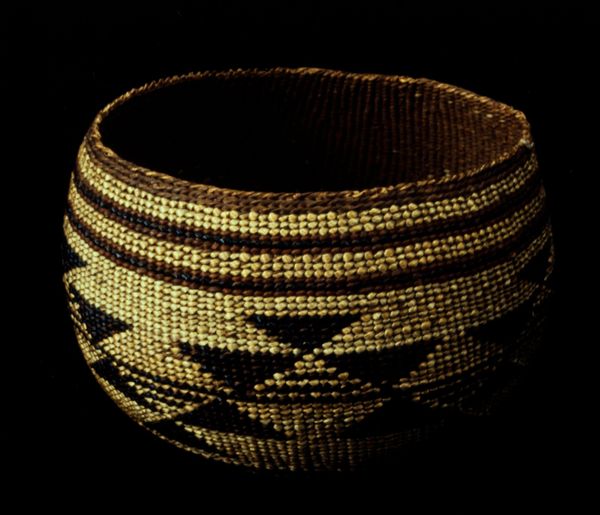
fibre-art, weaving, textile
#
fibre-art
#
sculpture
#
weaving
#
textile
#
geometric
#
indigenous-americas
Dimensions: 1 7/8 x 4 3/8 x 4 3/8 in. (4.8 x 11.1 x 11.1 cm)
Copyright: Public Domain
Curator: Let's turn our attention to a woven piece. This basket, made circa the 20th century, was crafted by an artist of the Tohono O'odham, also known as Papago, people. It's a beautiful example of fibre art. Editor: Immediately, the striking contrast draws me in. The dark patterns against the lighter woven material creates a real sense of depth, almost like a shadow play within the form. It feels primal. Curator: Yes, the high contrast geometric patterns are characteristic of Tohono O'odham weaving. Baskets like these were integral to daily life, and became important trade items that connect cultural endurance with historical marginalization. The art form evolved from utilitarian objects used for gathering and storage into an important commodity that provided much-needed economic opportunities under colonialism and US occupation. Editor: The geometric motifs also speak volumes. Consider the spiral—often linked to cycles of life, death, and rebirth. These baskets became vessels containing stories and symbols of cultural importance. I am very curious to know what was originally carried inside it? Curator: It's likely this specific basket would have been used for carrying food, perhaps saguaro fruit harvested during the Sonoran Desert's monsoon season. However, with increasing commercialization from the late 19th century onwards, these baskets were specifically crafted as artistic goods for the market and tourists rather than purely utilitarian purposes. This leads me to consider: what do Native communities lose when creating traditional work solely for profit, and what is gained? Editor: Absolutely, that is critical context to examine. Looking again at the details of its construction, the individual fibres appear carefully placed, creating texture that feels both organic and very precise. Even now it transmits resilience and continuity in its structure and form. Curator: Indeed. Today, Tohono O'odham weavers continue to create these artworks, maintaining both cultural heritage and economic sustainability. Understanding this blend of art, function, and economic circumstance is essential. Editor: I agree. What began as a vessel transcends pure utility. For me, it remains an archive containing a range of symbolism tied to cycles of time and generational memory.
Comments
No comments
Be the first to comment and join the conversation on the ultimate creative platform.
